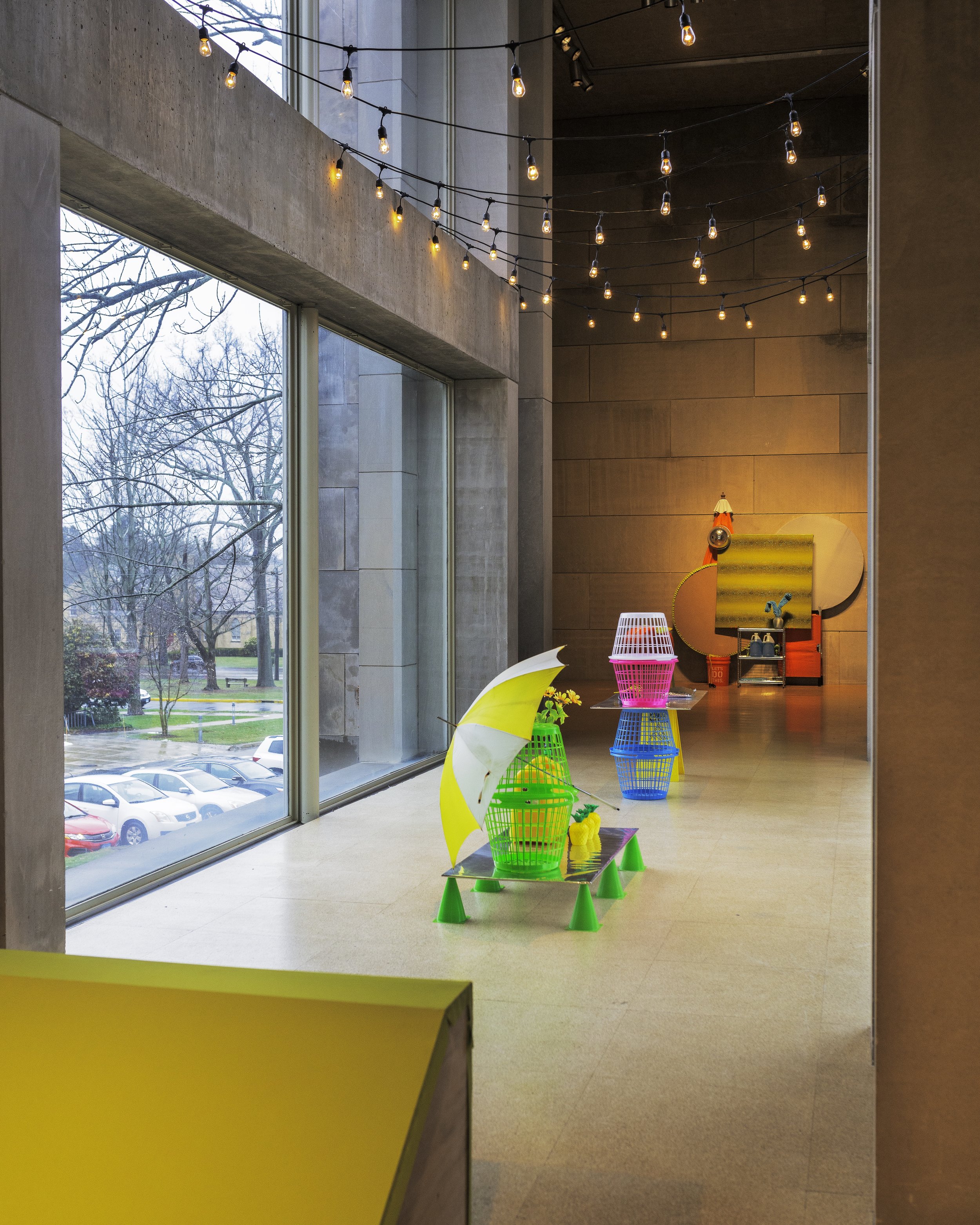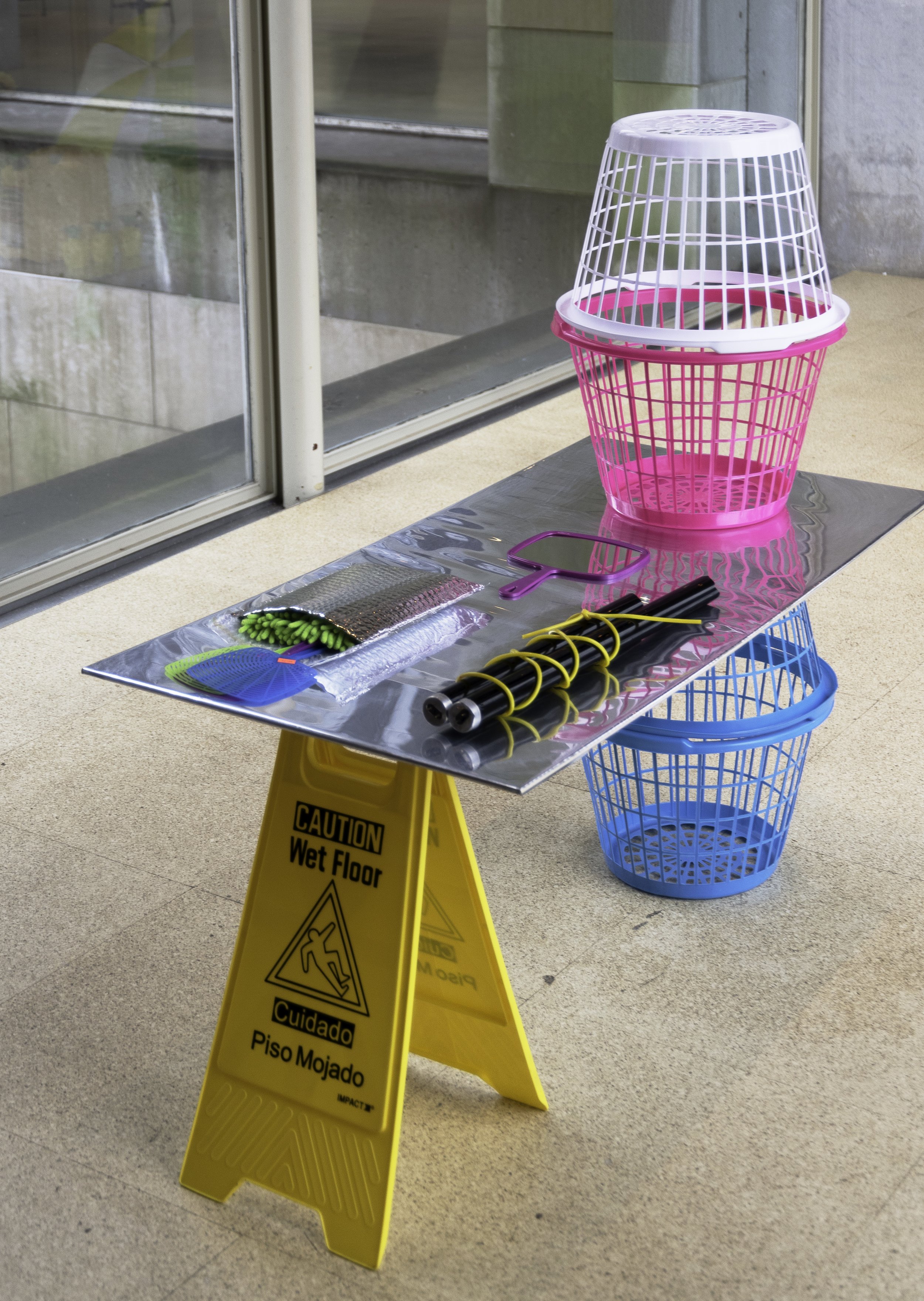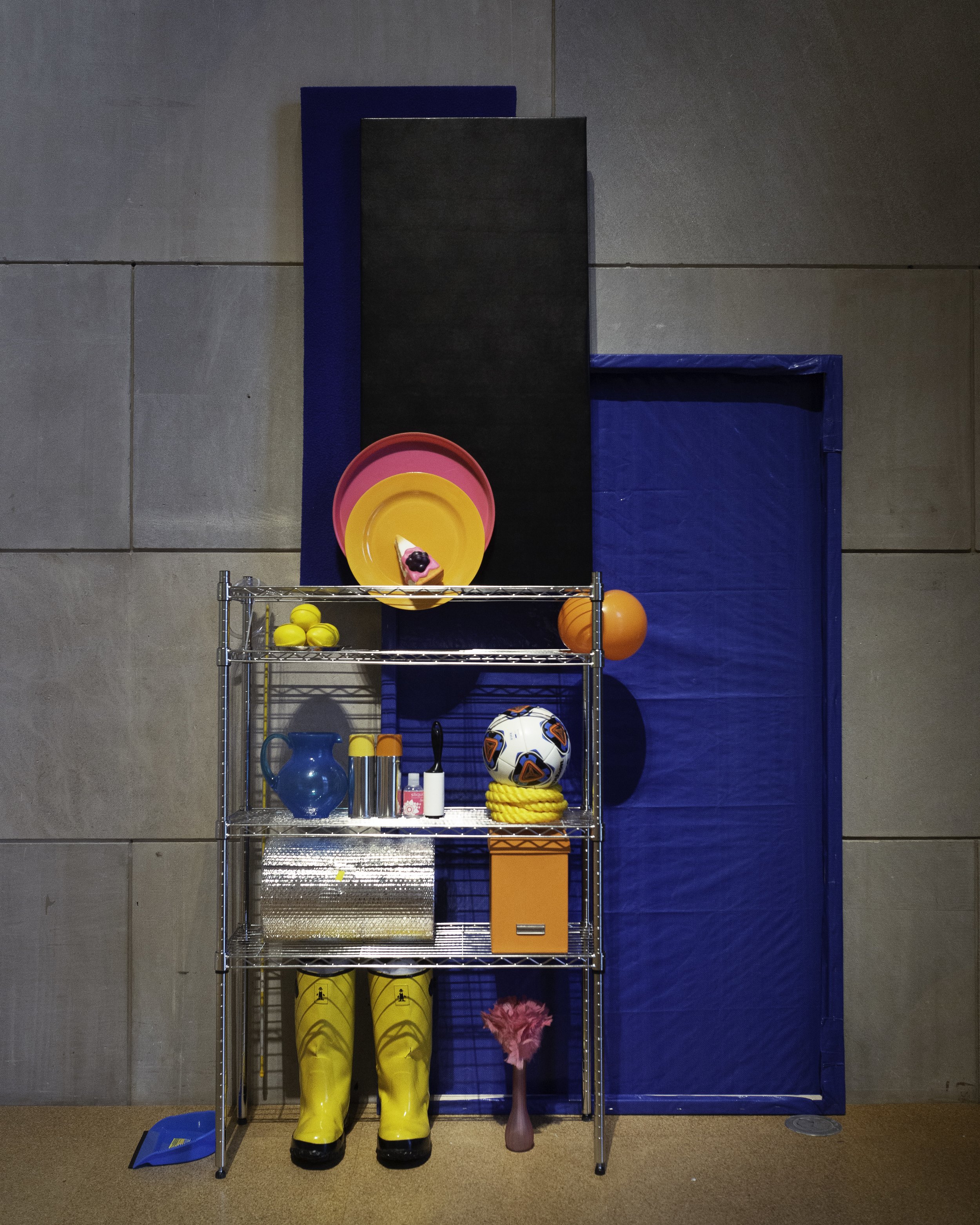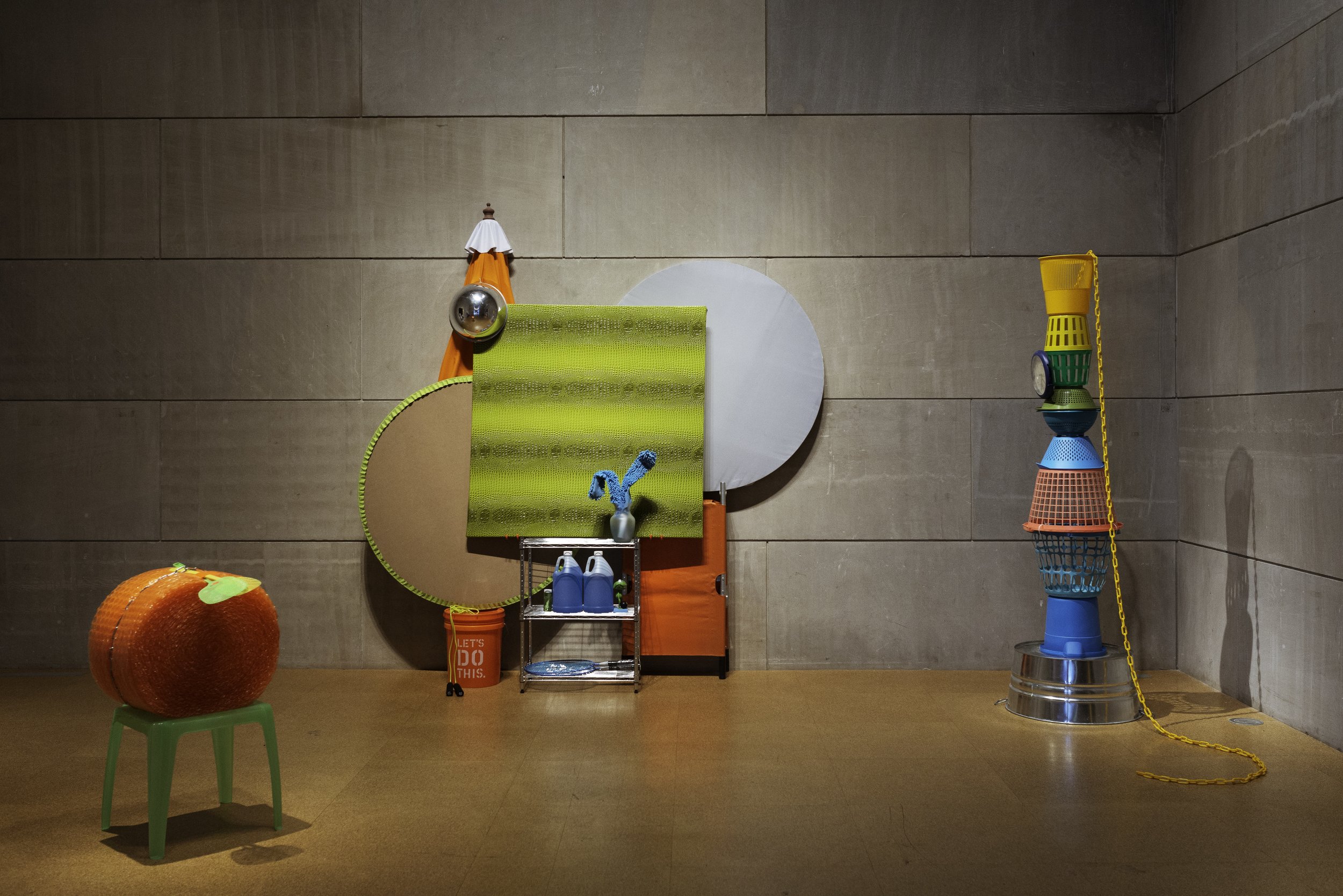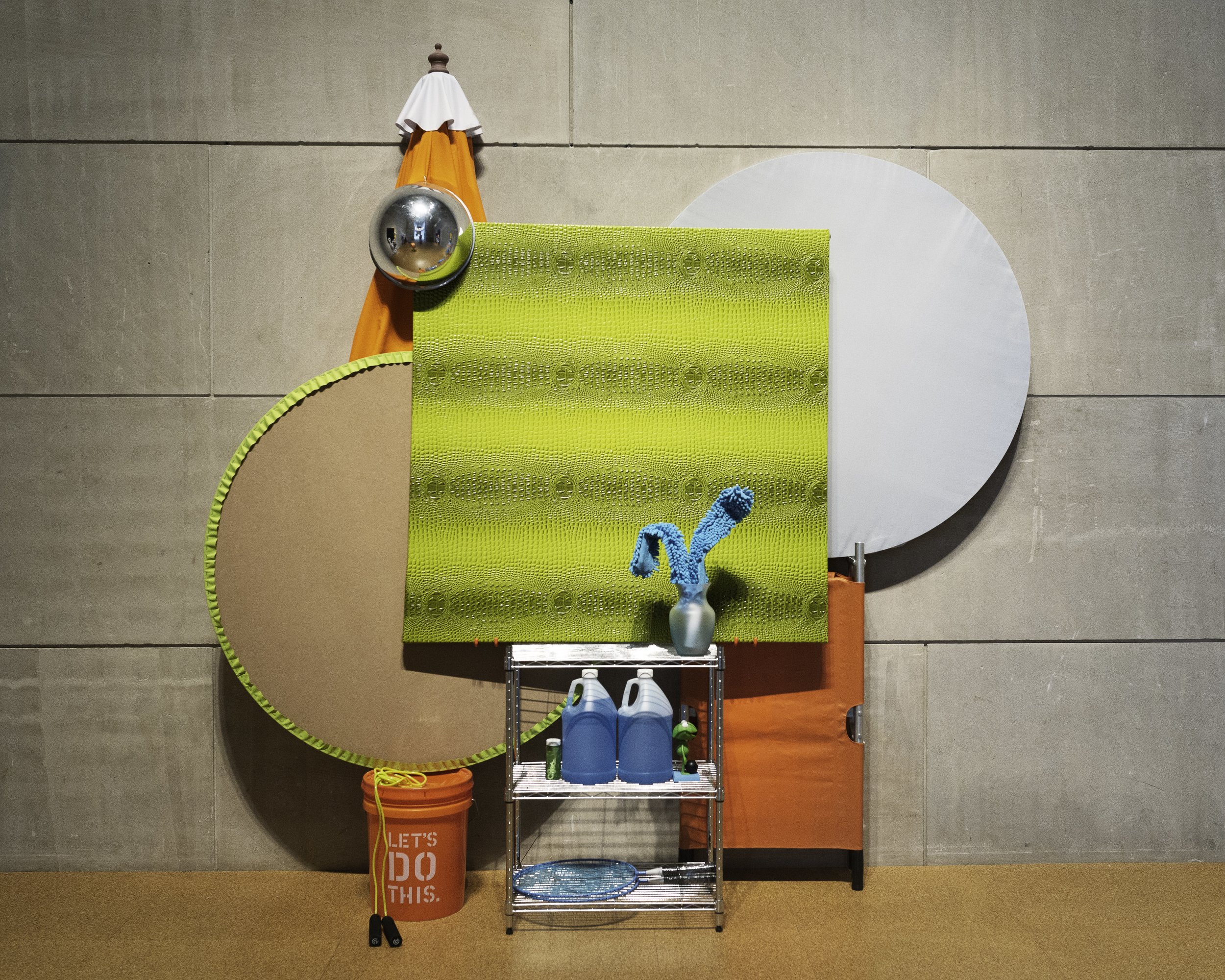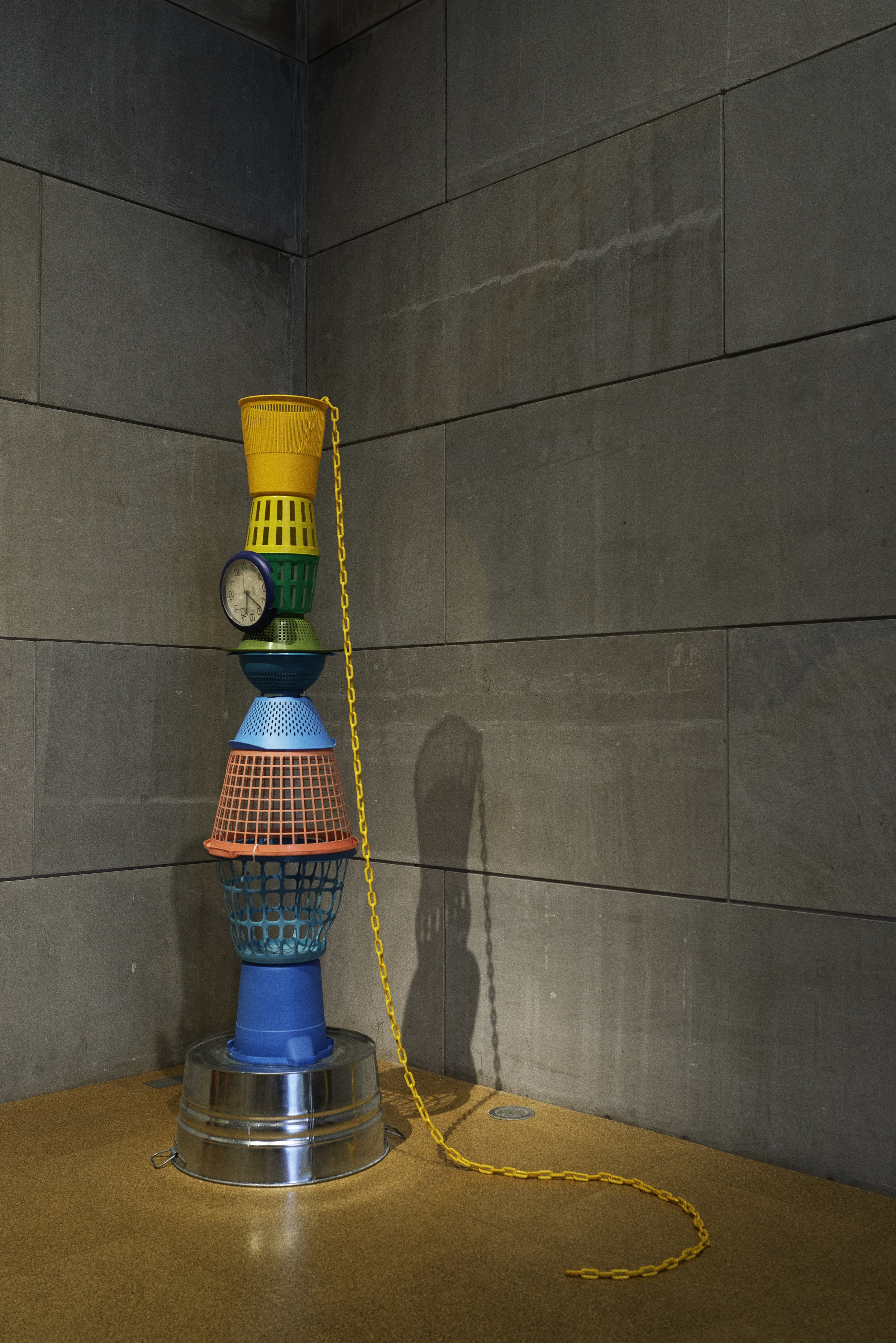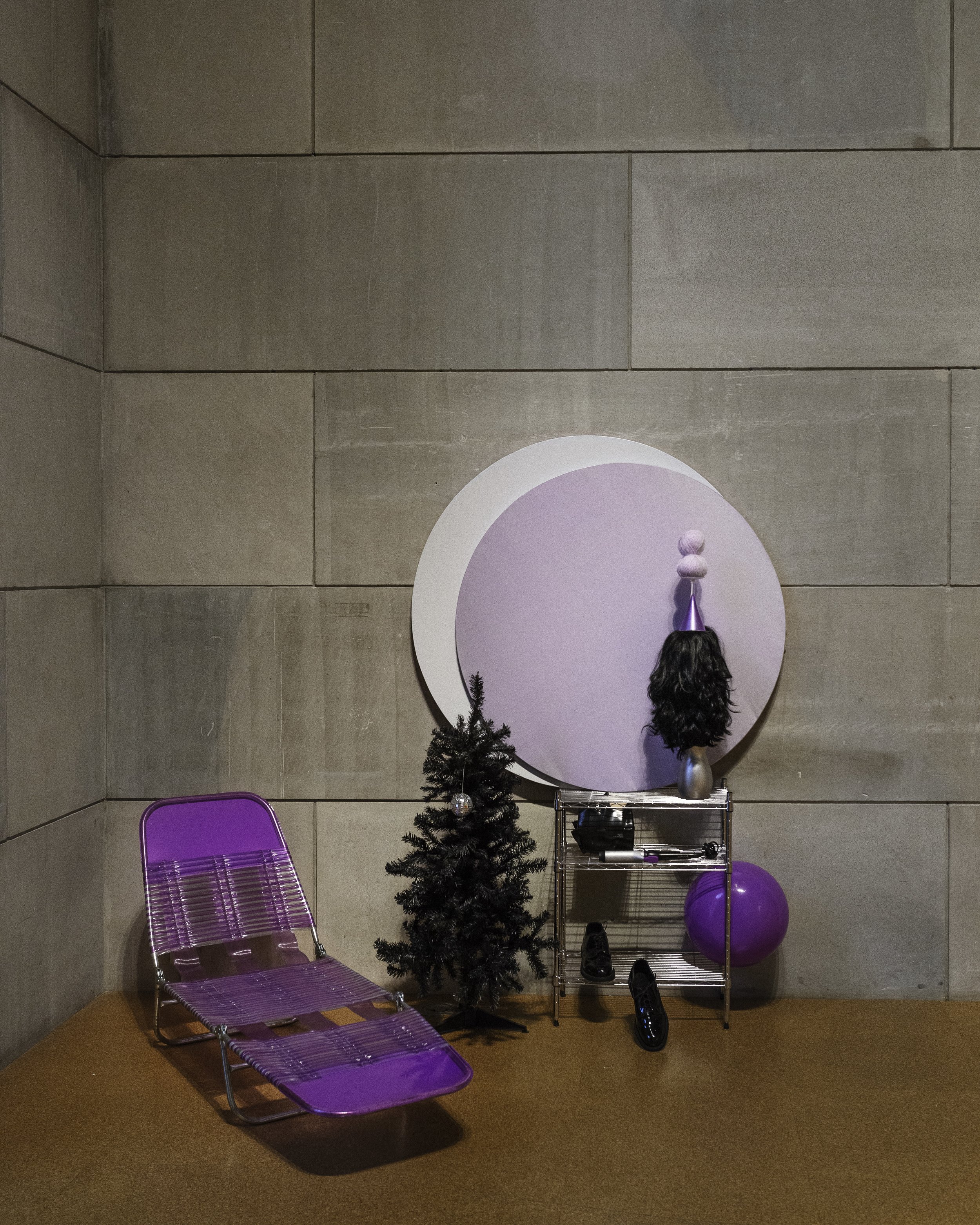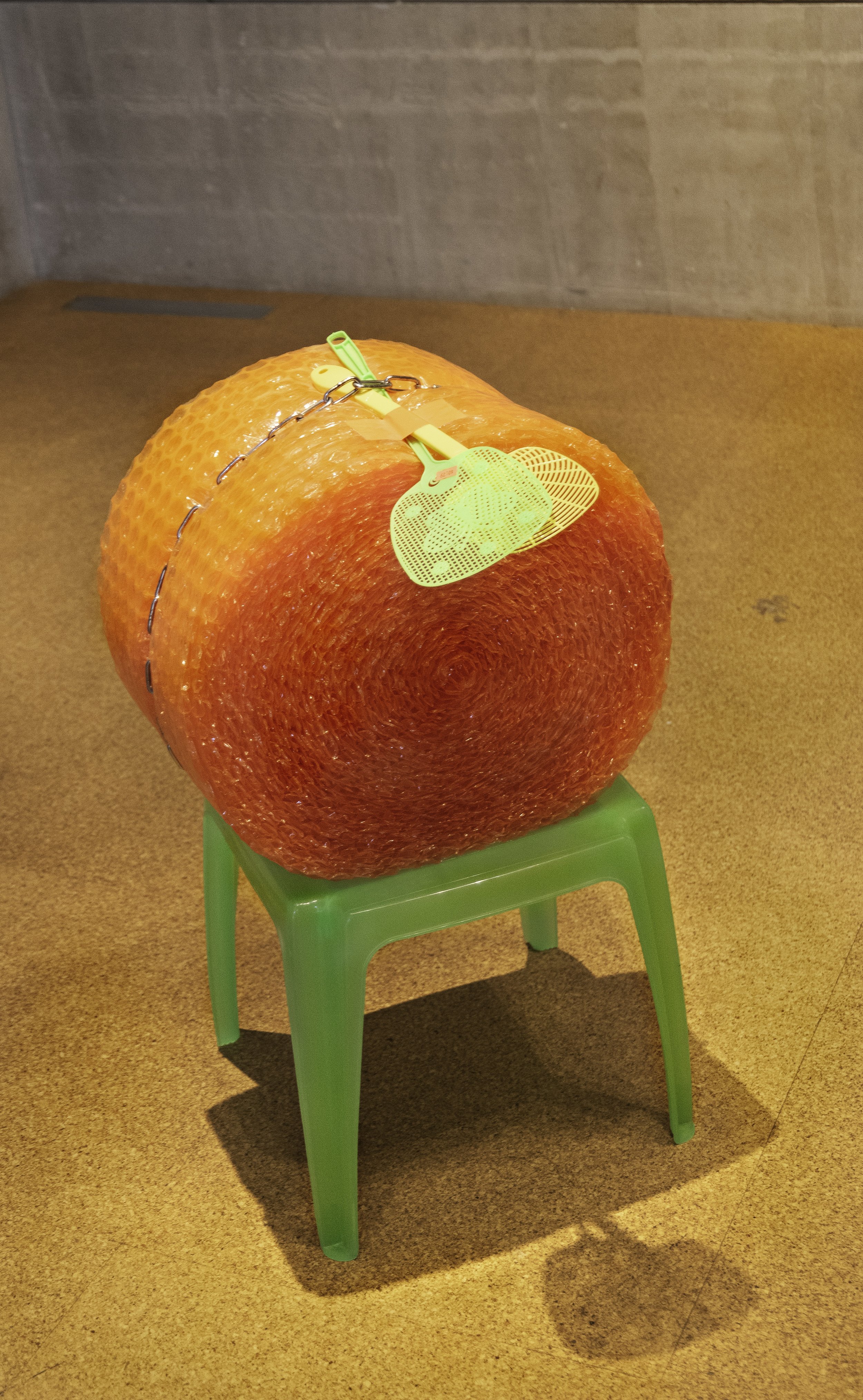'Jamais Vu: A Flâneur's Dream World,' 2018
This project was the culmination of a combined year-long studio practice that was presented in the North Gallery of Wesleyan's Ezra & Cecile Zilkha Gallery as part of the Art Studio Thesis Show. It is accompanied by my essay, Queering Form: (Dis)ordering the Distribution of the Sensible through the Realm of Aesthetics.
Artist Statement
My work is often characterized by brightly colored, plastic, commercial or utilitarian objects placed or arranged – rather than modified or affixed – such that they can be easily moved, altered, or exchanged. In this, I am interested in working with objects as they are, rather than in manipulating or distorting them beyond recognition. This strategy of placing and arranging objects intends to allow for innumerable permutations of combination and recombination, of presentation and display. Within and in an interactive dialogue with the object arrangements are monochromatic fabric on wood stretchers which blur clear distinctions between painting and sculpture.
My work seeks to foreground a sense of subtle, material potentiality, an idea which I hint at through the first part of the title of my thesis: The French, ‘jamais vu’, translates literally as ‘never seen’; as a corollary to the popular phrase ‘déjà vu’, it alludes however to the experience of seeing the same thing so many times that it becomes unrecognizable. It is in this space of unrecognizability within the routine and ordinary that reordering and transformation become possible. Within this framework, by juxtaposing things as they are or recontextualizing them in relation to other objects, a certain space is wedged open to capacitate new layers of meaning and alternative modes of seeing/encountering to emerge.
While I use objects as they are and do not seek to disguise their original identity or function, I do not necessarily use them for their intended purpose nor for their familiar representational capacities; instead, I focus on amplifying their formal qualities (color, shape, texture) in order to create sculptural paintings from everyday materials. In doing so, I am seeking to destabilize their fixed signifying capacity as a means of reordering meaning and object relations. This practice of learning to see objects in new and unfamiliar ways translates (at least for me) to learning to see social relations in alternative configurations as well.
A la Charles Baudelaire’s ‘flâneur,’ the figure popularized by Walter Benjamin, my artistic process begins with the experience of meandering through the streets of a city, the aisles of a thrift store, or the pages of ‘free’ Craigslist with a sense of openness and joy in the unexpected. In the vein of José Muñoz’s theorization of a queer aesthetics, my practice is inflected by a mode of (queer) cruising – that is, allowing my attraction or excitement, for one reason or another, to guide my selection and collection of objects. While there is a certain grammar to my attraction, this process isn’t dictated by clear rules or preconceptions about the particular form of the object – it might simply be a color, a texture, a shape that draws me in.
In my studio, through playful and critical experimentation I create highly formal “paintings” that allow new formal and social relationships between objects begin to emerge. Together they evoke a sense of joy, playfulness, skepticism, and ominousness. What does it mean to desire and take pleasure in cheap frivolities? What does it mean to find pleasure in surface? What are the potentials and the limits of a non-representational mode of interaction? Where and how might we generate possibility from sites seemingly emptied of all hope?
